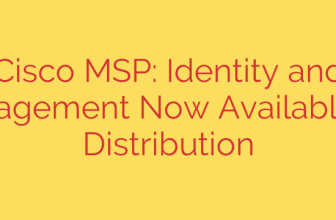
Simplify Network File Sharing: The Power of a Lightweight WebDAV Server
Ever needed to quickly move a file from one machine to another on your local network? For many developers and system administrators, the go-to solutions like setting up a Samba or NFS share can feel like using a sledgehammer to crack a nut. They are powerful but often come with complex configuration and dependencies. Fortunately, there’s a simpler, more elegant solution: using a lightweight WebDAV server.
WebDAV, which stands for Web Distributed Authoring and Versioning, is a powerful extension of the HTTP protocol. It essentially transforms a standard web server into a shared network drive that you can interact with directly from your operating system’s file manager. This technology is built into Windows, macOS, and most Linux distributions, making it a universally accessible tool for file management.
While full-featured web servers like Apache or Nginx can be configured to support WebDAV, a new class of minimalist, single-purpose servers offers a far more efficient alternative for quick, temporary file sharing.
The Advantage of a Minimalist Approach
The beauty of a simple, command-line WebDAV server lies in its simplicity and portability. Often written in languages like Go, these tools are compiled into a single, dependency-free executable file. This means you can drop the binary onto any system—Windows, macOS, or Linux—and run it instantly without any installation or configuration headaches.
This approach is ideal for a variety of common scenarios:
- Transferring build artifacts from a development machine to a test server.
- Quickly sharing log files or documents with a colleague on the same network.
- Creating a temporary drop-box for a project without cloud service overhead.
- Accessing files on a headless server from a graphical desktop environment.
Key Features to Look For in a Simple WebDAV Server
A good lightweight WebDAV server doesn’t need a lot of bells and whistles. It just needs to do the core job reliably and securely. Here are the essential features that make these tools so effective:
- Zero-Configuration Startup: The ability to launch the server with a single command is paramount. You should be able to specify the directory you want to share directly from the command line and have it running in seconds.
- Basic Authentication: Even on a trusted local network, you should never expose files without protection. A simple server must include an option for username and password authentication, typically set with a command-line flag.
- Read-Only Mode: For situations where you only need to pull files from the server, a read-only mode is a critical security feature. It prevents any accidental modification or deletion of the source files, ensuring data integrity.
- Cross-Platform Compatibility: A server built as a single, self-contained binary can be easily used across different operating systems, making it a versatile tool for any environment.
Getting Started: A Practical Guide
Using one of these lightweight servers is incredibly straightforward. While the exact commands may vary slightly, the process generally follows these steps.
Download the Executable: Find and download a single-binary WebDAV server suitable for your operating system.
Run it from Your Terminal: Open a terminal or command prompt, navigate to the directory you want to share, and run the server. You’ll typically specify a port and authentication credentials.
For example, a command might look like this:
./dave-server --port=8080 --auth=admin:SecurePassword123Connect from Your File Manager:
- On Windows: Open File Explorer, right-click on “This PC,” and select “Map network drive.” Enter the server’s address, such as
http://<server-ip>:8080. - On macOS: Open Finder, go to the “Go” menu, and select “Connect to Server.” Enter the address in the same format:
http://<server-ip>:8080. - On Linux: Use your distribution’s file manager (like Nautilus or Dolphin) and find the “Connect to Server” option.
- On Windows: Open File Explorer, right-click on “This PC,” and select “Map network drive.” Enter the server’s address, such as
Once connected, the shared directory will appear as a network drive, allowing you to drag, drop, and manage files as if they were on your local machine.
Crucial Security Best Practices
Simplicity should never come at the expense of security. While these tools are designed for ease of use, you must handle them responsibly.
- Use on Trusted Networks Only: These servers are intended for use on a secure Local Area Network (LAN). Never expose a simple WebDAV server directly to the public internet without placing it behind a properly configured reverse proxy with TLS/SSL encryption.
- Always Use Authentication: Even on a trusted network, always protect your shared directory with a strong, unique password. Avoid running the server in an open, unprotected state.
- Leverage Read-Only Mode: If you don’t need to write files to the server, always start it in read-only mode. This is the safest configuration and prevents any unintended changes to your data.
- Use a Firewall: Ensure your system’s firewall is configured to only allow access to the WebDAV port from specific, trusted IP addresses on your network.
For developers and sysadmins who need a no-fuss way to share files, a lightweight, single-binary WebDAV server is an invaluable and efficient tool. It strips away the complexity of traditional file-sharing protocols, offering a fast and secure solution for everyday tasks.
Source: https://www.linuxlinks.com/dave-simple-webdav-server/








